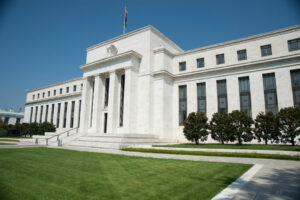Fed officials eye ‘broadening’ disinflation as new rate-cut test

SOME US Federal Reserve officials, who were surprised by inflation’s rapid descent in 2023, seem to be setting a new bar for interest rate cuts: a broader pullback in price pressures.
Last week, both Richmond Fed President Thomas Barkin and Boston Fed President Susan Collins indicated they not only want the decline in inflation to continue — like many other officials have said — but also to broaden more meaningfully to housing and other services, given the recent slowing was driven more by goods.
“Are they making a new benchmark, changing the goalposts? It sure seems like it,” said Michael Skordeles, head of US economics for Truist Advisory Services. “They have found enough rationale to put the stake in the ground to be patient.”
Policy makers have left rates unchanged since July, and Fed Chair Jerome H. Powell has already said that a rate cut next month is unlikely as officials seek greater confidence that inflation is headed back to their 2% target. Waiting for a significant broadening in disinflation could push out the timing of the first rate reduction even further.
The remarkable improvement in inflation seen in recent months — and confirmed in revisions out Friday — largely reflects a reversal in energy prices, healing supply chains and lower costs for things like used cars and clothing. Services inflation has also eased, helped by moderating wage gains amid an influx of workers into the labor market, but progress has been slower.
Consumer prices for goods, excluding food and fuel, increased just 0.2% in 2023. Meanwhile, the consumer price index for services excluding energy climbed 5.3%.
“I am hopeful but still looking for more conviction that the slowing of inflation is broadening and sustainable,” Mr. Barkin said in a speech last week. On Bloomberg Television, Mr. Barkin said he’d like to see that trend “continue and broaden” as policy makers get a “few more months” of data.
Fed officials were set to receive a fresh read on inflation Tuesday with the release of the consumer price index (CPI), which was estimated to have retreated in January to below 3% for the first time in nearly three years. The Fed’s preferred gauge of underlying inflation was up 1.9% in December on a six-month annualized basis, actually below the Fed’s 2% target.
“It appears that they’re concerned that too much of the disinflation is coming from declines in goods prices, which may not persist,” said Michael Gapen, head of US economics at Bank of America.
Parsing the data in different ways underscores why some officials may be more cautious about the inflation outlook.
A measure of inflation created by the Dallas Fed that eliminates the sharpest price changes showed a 3.3% annual gain in December, notably above the 2.6% advance in the government’s personal consumption expenditures price index.
The Atlanta Fed’s consumer price index for costs that are sticky — or those that don’t change often — increased a lofty 4.6% in the past year, nearly double the pre-pandemic average. This metric is often seen as a gauge of businesses’ inflation expectations.
“Expecting all indicators to be well aligned is too high a bar, but seeing sustained, broadening signs of progress should provide the necessary confidence I would need to begin a methodical adjustment to our policy stance,” Ms. Collins said last week.
Mr. Powell said in January that while his target is aggregate inflation, it’s a reasonable assumption that over time goods disinflation will flatten out, and “that would mean the services sectors would have to contribute more.”
REVISED PICTURE
The annual CPI revisions released Friday confirmed the inflation progress made at the end of last year, relieving a concern Fed Governor Christopher Waller had previously flagged. Economists also noted a brighter picture for so-called supercore services, which exclude energy and housing.
Mr. Powell and his colleagues have cited the importance of such a measure to assess the nation’s inflation trajectory, though they compute it based on a separate index.
“We found the confirmation of the existing disinflation narrative — and the stronger disinflation momentum in core services, especially housing rents — quite significant,” economists led by Bloomberg Economics’ Anna Wong wrote in a note. That will give “policy makers greater confidence about the progress on disinflation.”
Some officials worry premature easing, if followed by another round of accelerating inflation and then a hike in rates, could hurt public confidence and unmoor inflation expectations. Atlanta Fed President Raphael Bostic has said that a reversal would be the worst outcome for policy.
“You could have a reacceleration in inflation — that’s the risk,” said Diane Swonk, chief economist at KPMG LLP. “They’re hedging and they feel that they have latitude to hedge against that risk given how strong the economy is.” — Bloomberg




